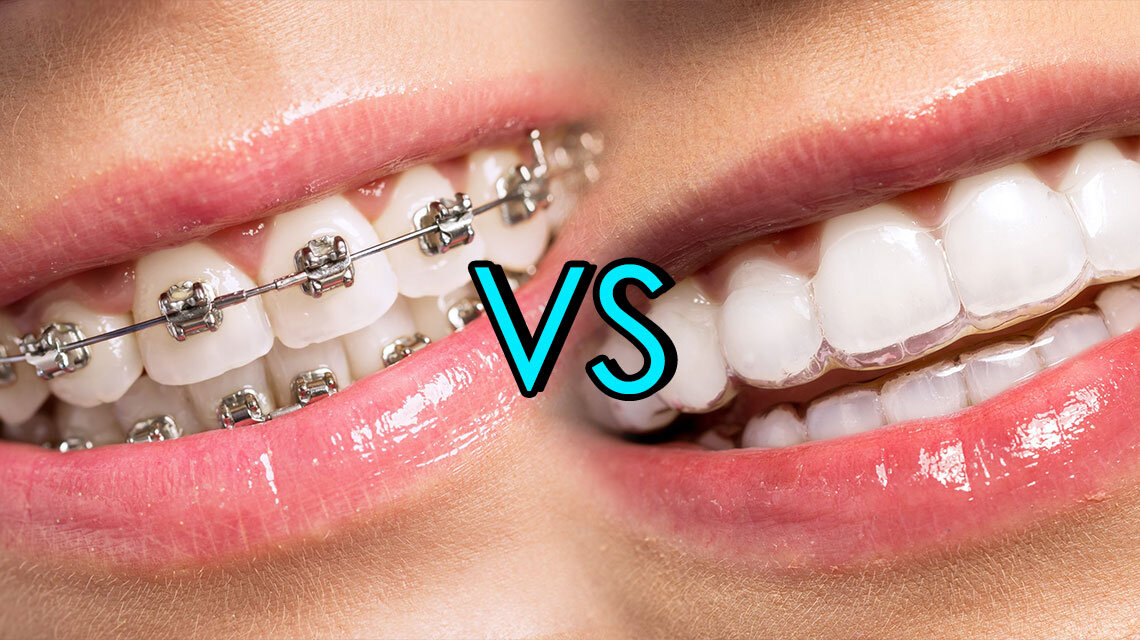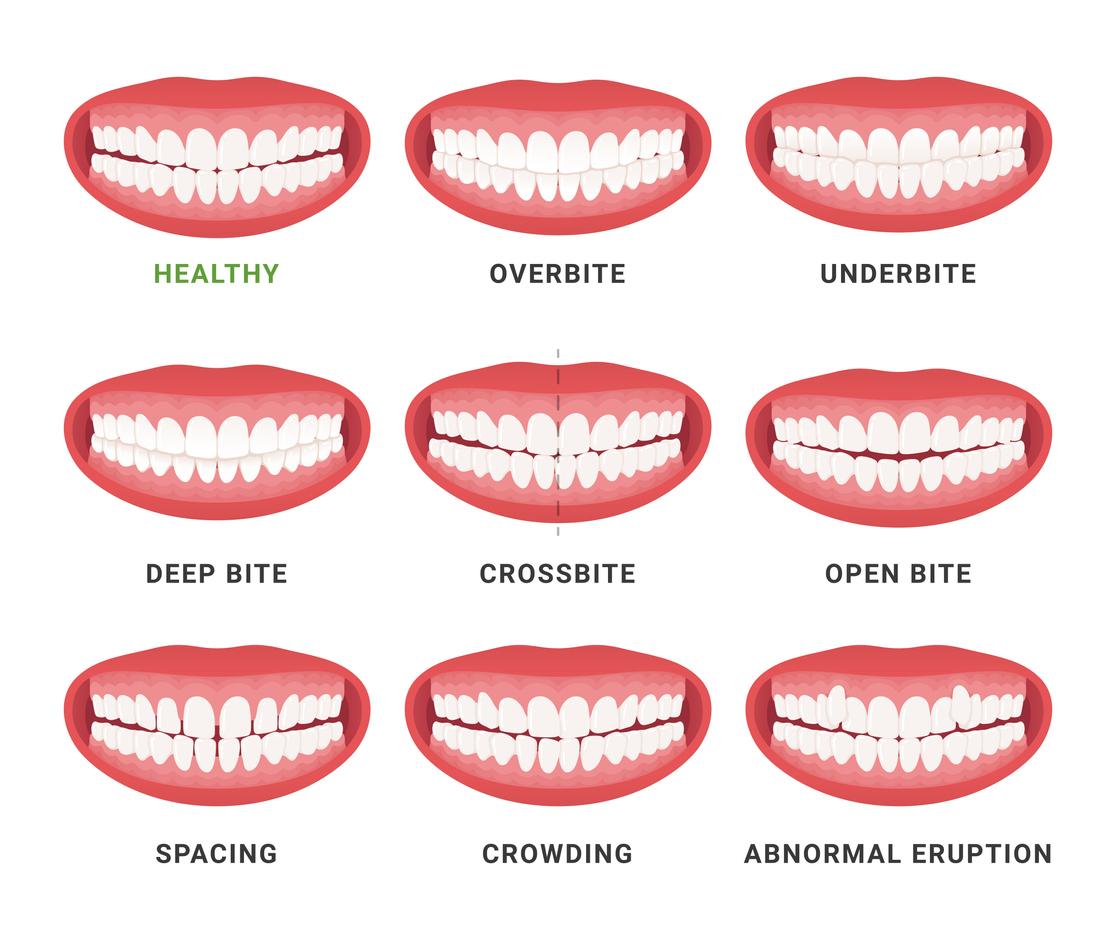How Invisalign Functions: Your Overview to Clear Aligners and Their Effectiveness
How Invisalign Functions: Your Overview to Clear Aligners and Their Effectiveness
Blog Article
Invisalign vs. Conventional Braces: Which Choice Is Right for You?
When thinking about orthodontic therapy, the choice in between Invisalign and traditional braces offers a number of crucial variables that merit careful assessment. Invisalign provides a discreet choice with detachable aligners, while conventional braces give an extra visible yet effective remedy for serious misalignment.
Overview of Therapy Choices

In comparison, traditional braces include metal brackets and cords that are bonded to the teeth. This technique uses continuous pressure with time to achieve positioning. While reliable for complex orthodontic problems, typical braces require routine sees for adjustments and can position obstacles in keeping oral hygiene because of the trouble of cleansing around cables and braces.
Both alternatives have their benefits, and the option usually pivots on specific dental conditions, way of life choices, and person conformity. Inevitably, speaking with an orthodontic expert is vital for establishing one of the most ideal therapy plan tailored to individual needs. Comprehending the subtleties of each option can considerably influence the overall success of orthodontic therapy.
Aesthetic Considerations
A significant element influencing the choice between Invisalign and traditional dental braces is the visual allure each therapy uses. Invisalign aligners are crafted from clear plastic, making them essentially undetectable when used. This discreet appearance is specifically interesting grownups and teens that might feel self-conscious about their orthodontic therapy. The capability to preserve a natural smile throughout the placement procedure can substantially improve the patient's self-confidence in social and specialist settings.
On the other hand, standard braces contain metal braces and wires, which can be extra obvious. While advancements in orthodontic modern technology have brought about the advancement of smaller sized brackets and tinted elastics, conventional dental braces still preserve an even more conspicuous account. For some individuals, the exposure of dental braces may hinder them from seeking essential treatment.
Inevitably, the choice in between Invisalign and conventional dental braces might hinge on individual preferences relating to aesthetic appeals. Patients that prioritize discretion usually lean toward Invisalign, while those who are much less concerned about exposure might select standard dental braces. Understanding the aesthetic effects of each option is important for making an educated decision that lines up with one's way of living and choices.
Convenience and Convenience

In regards to comfort, Invisalign aligners are detachable, making it possible for people to enjoy their preferred foods without limitation and keep optimum oral hygiene. Brushing and flossing are streamlined, as the aligners can be secured throughout these routines, whereas standard dental braces require mindful maneuvering around wires and brackets.
In addition, Invisalign's dynamic system permits less orthodontic sees. Individuals typically obtain multiple collections of aligners simultaneously, which can improve the therapy procedure and reduce time invested in the orthodontist's chair. On the other hand, conventional braces necessitate routine modifications, making them less practical for those with hectic routines. Invisalign. On the whole, the convenience and benefit of Invisalign make it an enticing option for lots of people looking for orthodontic therapy.
Treatment Period and Efficiency
While both Invisalign and conventional braces are efficient in dealing with oral imbalances, the period of therapy can vary considerably between both options. Generally, Invisalign treatment can take anywhere from 12 to 18 months, depending upon the complexity of the case. The clear aligners function by progressively moving teeth into their preferred positions, and routine follow-ups with an orthodontist aid guarantee development remains on the right track.
On the other hand, standard braces frequently call for a longer commitment, normally ranging from 18 months to three years. This is due to their fixed nature and making use of wires and braces, which can be more efficient for complex situations and serious imbalances (Invisalign). The therapy performance of traditional dental braces is well-documented, as they enable specific changes and higher control over tooth activity
Eventually, the choice in between check my reference Invisalign and conventional dental braces might depend upon both the expected treatment duration and the certain oral problems at hand. Consulting with an orthodontist is essential, as they can supply tailored recommendations based on private demands, making sure the selected technique lines up with wanted end results and durations.
Price Contrast and Insurance Policy Options
Price plays a considerable function in the decision-making process for people taking into consideration orthodontic treatment, whether opting for Invisalign or typical dental braces. On standard, the cost of Invisalign ranges from $3,000 to $8,000, while conventional dental braces commonly cost between $2,000 and $6,000. Aspects influencing these costs consist of the complexity of the situation, the period of therapy, and geographical place.
Insurance coverage can significantly affect out-of-pocket costs. Lots of dental insurance strategies offer partial coverage for orthodontic treatments, however the specifics can vary widely. It is crucial for clients to evaluate their insurance policy policies to determine the degree of protection for either choice. Generally, traditional braces may be a lot more regularly covered by insurance policy strategies compared to Invisalign, which some insurance providers categorize as an aesthetic procedure.
Additionally, several orthodontic description techniques offer versatile layaway plan, making both treatment choices more easily accessible. People ought to ask about prospective funding options and discount rates for in advance payments. Reviewing the complete cost, including insurance benefits and payment plans, is necessary for making an informed choice that aligns with both visual preferences and spending plan factors to consider.

Final Thought
In summary, the selection between Invisalign and traditional dental braces rests on several factors, consisting of visual choices, convenience, therapy duration, and cost. Invisalign provides a discreet, removable option that facilitates dental health and nutritional versatility, while standard braces may be better for intricate oral problems and frequently come at a reduced cost point. Ultimately, consultation with an orthodontist is necessary to analyze private situations and determine one of the most proper treatment image source option for attaining ideal dental placement.
When thinking about orthodontic treatment, the selection between Invisalign and traditional dental braces presents numerous crucial factors that warrant mindful examination.Comparing Invisalign and typical dental braces discloses distinctive treatment choices for orthodontic modification.While both Invisalign and standard braces are reliable in fixing oral misalignments, the period of therapy can differ significantly in between the two alternatives.Expense plays a considerable role in the decision-making process for individuals considering orthodontic therapy, whether deciding for Invisalign or traditional dental braces.In summary, the option in between Invisalign and conventional dental braces hinges on several variables, consisting of aesthetic preferences, comfort, treatment period, and cost.
Report this page